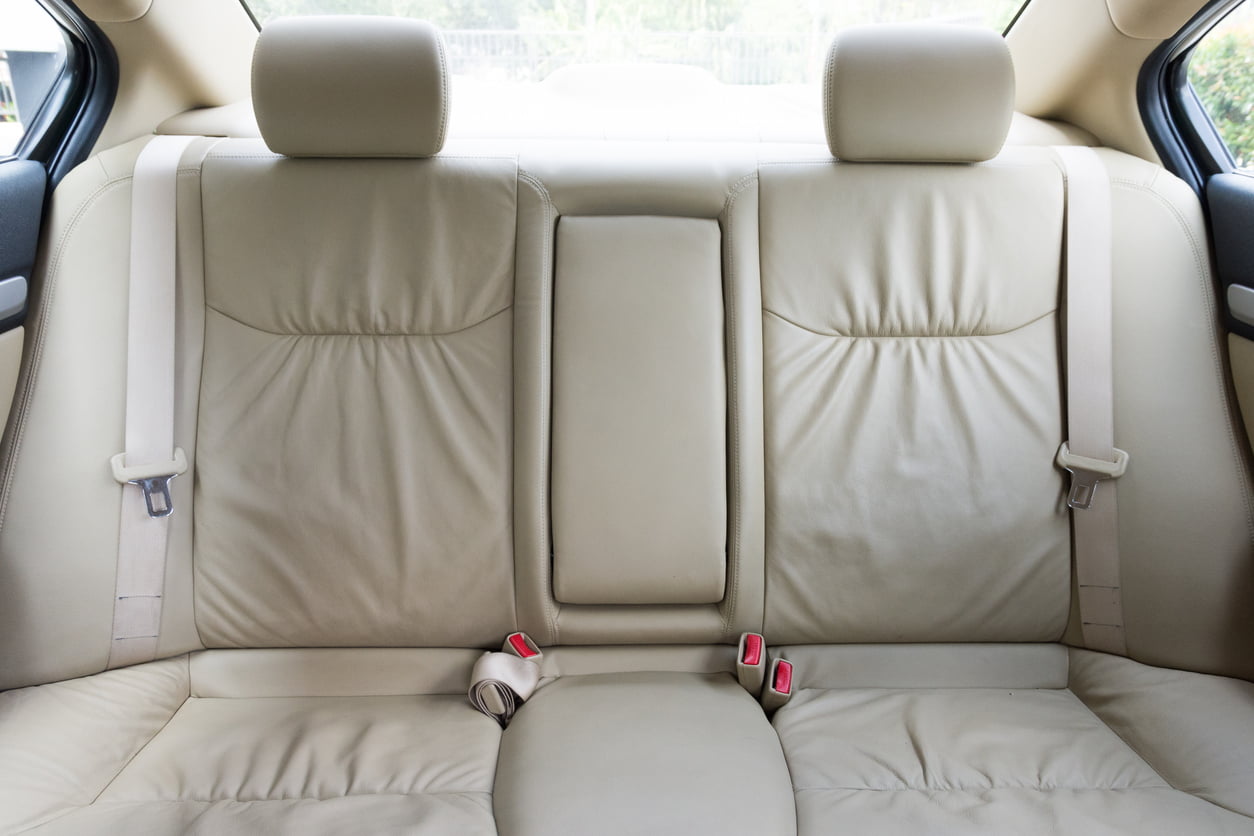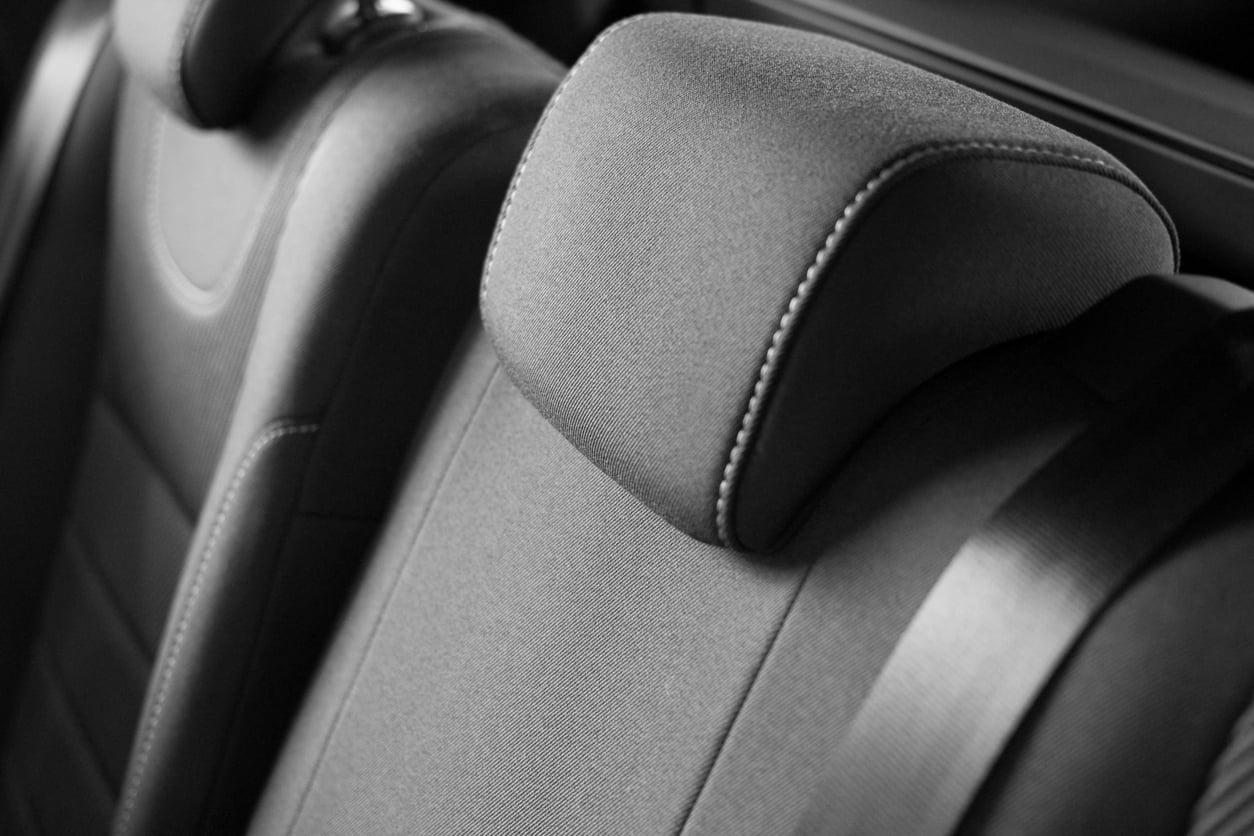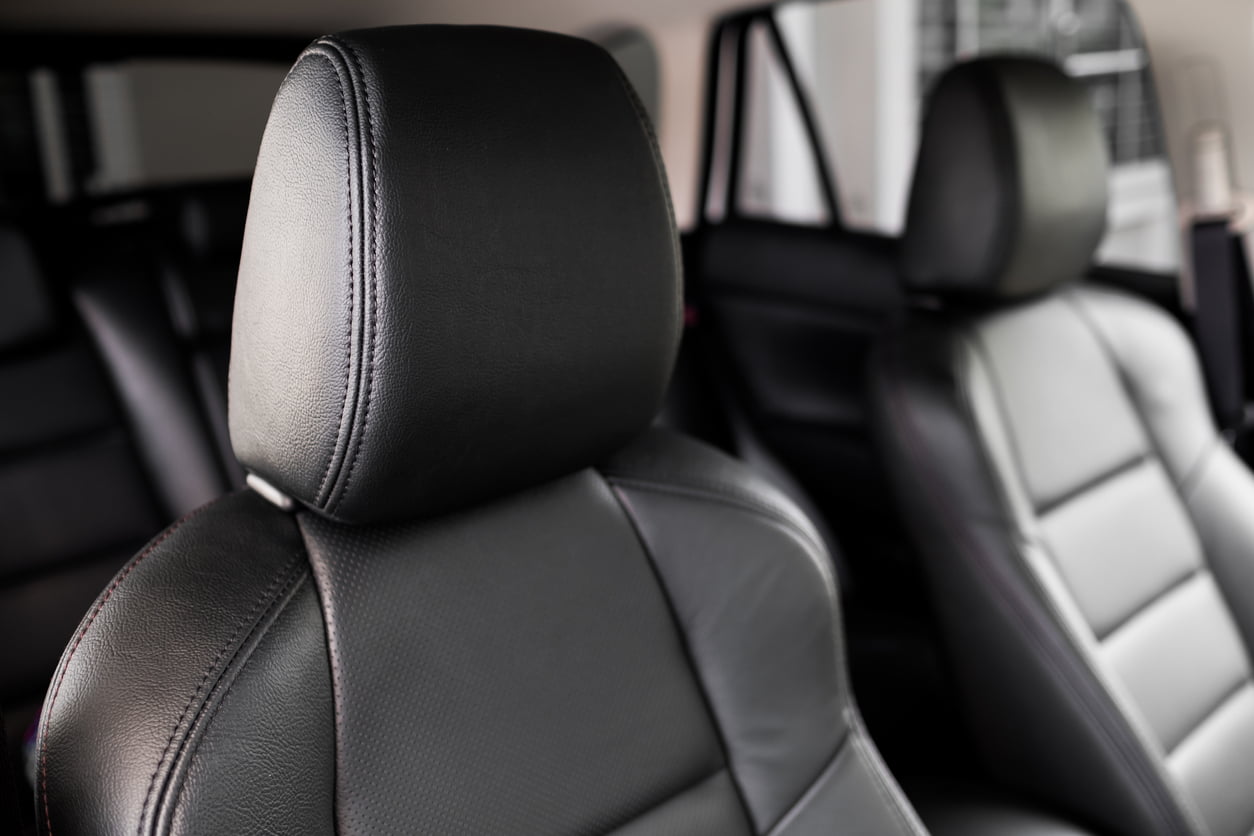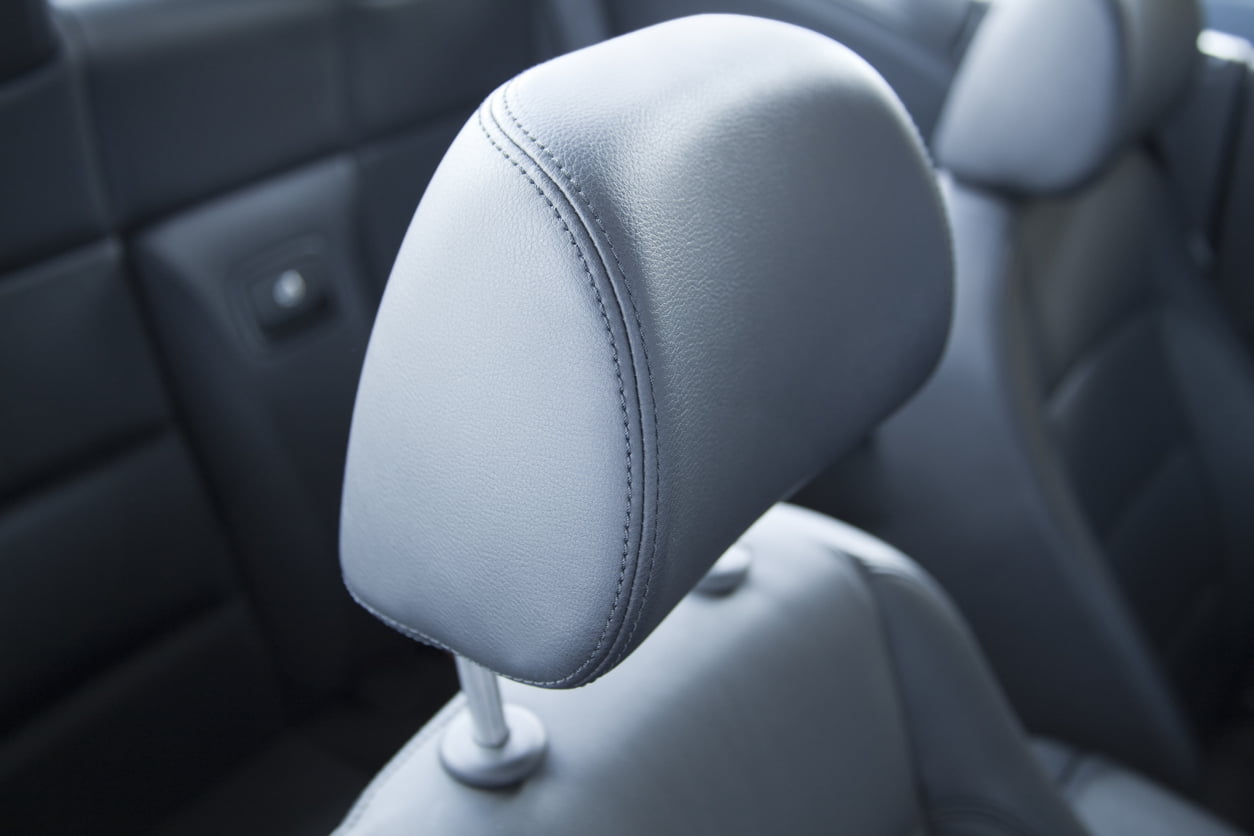Did you know that if you’re buying a brand new car, most carmakers give you a choice of seat finishes? If you’ve never picked the material for your car seats before, you might be wondering where to start.
To help you pick the perfect seats for your new car, we’ve put together a guide to the pros and cons of the most common materials, including leather, vinyl and fabric. These three finishes represent the affordable, mid-range and premium options, so you can see for yourself if it’s worth stepping up to the next price point.
Quick Links
Blog Sign Up
"*" indicates required fields
Leather Car Seats
The Pros of Leather Car Seats
For some, leather is the go-to seat material for that premium feel and finish. It’s durable, comfortable and visually appealing, and is fairly easy to maintain with the right products. Here are the pros of leather seats in a nutshell:
- Premium feel – climb into any car with leather seats, and you’ll immediately feel the difference. Leather feels, smells and looks expensive, giving your car a top-of-the-range finish.
- Comfortable – leather is a highly-supportive material, meaning that, when paired with the right foam cushioning, it makes the most comfortable and supportive seat choice.
- Durable and simple to maintain – sure, leather needs a little TLC to keep it looking its best, but provided you have the right products, it doesn’t take that much looking after. All you need is a leather care cream to keep them clean and nourished.
The Cons of Leather Car Seats
Leather may be top drawer when it comes to car seat materials, but it’s not without its drawbacks. If you’re looking for a no-nonsense material that can deal with day-to-day wear and tear, it may not be for you. Here are some of the downsides to be aware of:
- Expensive – leather car seats can add a couple of hundred quid to the price of your car, and are among the most expensive optional extras on most models. That said, cars with leather seats will hold their value well.
- Maintenance – granted, we just touched on the ease of maintaining leather car seats, but if you aren’t one for regularly cleaning and looking after your car, leather seats may be like a rod for your own back. Because it’s natural, leather needs regular nourishment to stop it drying out and cracking. It can also stain quite easily.
- Difficult to repair – puncturing your leather seats with something sharp like your car keys could prove a costly mistake to put right. Because leather is pulled tight over the frame of the seat, it’s surprisingly easy to damage, and things like holes and scratches can be expensive and difficult to repair.
- Not vegan-friendly – leather is made from animal hide, mean it is not suitable for people living a vegan lifestyle.
Best For
Leather car seats are best for those who take pride in their car. Premium and durable, you’ll need to look after it regularly to keep it looking its best, but if you enjoy that sort of thing, leather car seats are a sound investment.
Learn how to take care of leather car seats like a pro
Vinyl Car Seats
The Pros of Vinyl Car Seats
Vinyl may sound like a cheaper option when it comes to car seats, but modern versions of the material look and feel much better than you might think. Here are some of the benefits of vinyl car seats:
- Easy to maintain – where leather takes some maintenance, vinyl is the exact opposite. Made from durable plastic, vinyl is a doddle to maintain and will continue to look good-as-new no matter how many miles you cover.
- Simple to clean – if your kids make a mess on every car journey, or you regularly take your four-legged friend on family outings, vinyl seats can be a godsend. Wipeable and stain-resistant, it’s the perfect material for those who constantly find themselves wiping up spills.
- Environmentally-friendly – some vinyl furnishings are made from recycled plastics, making them incredibly environmentally-friendly.
The Cons of Vinyl Car Seats
As you might expect, vinyl isn’t without its pitfalls. Here are some of the need-to-knows before deciding on this type of seat material:
- Easy to damage – vinyl is easier to damage than leather, so don’t go near it with any sharp objects. This can be a real problem if you regularly fold down the rear seats to put big items in the boot, as any sharp edges can easily scratch or damage the seats.
- Cheaper feel – vinyl is much cheaper than leather, and sometimes it can show. While modern vinyl seat coverings do look better, they still don’t have the same look and feel as leather.
- Hot in the summer – opt for black vinyl seats, and you’ll find they get absorb loads of heat in the summer. The material isn’t as breathable as leather, either, which can be uncomfortable on long hot journeys.
 Best For
Best For
Vinyl is a decent all-rounder, offering good durability and being extremely easy to clean. Ideal for parents with messy kids or those with the family dog in tow, choose vinyl for easy day-to-day maintenance and the option to add a touch of personality to your new car.
Fabric Car Seats
The Pros of Fabric Car Seats
Modern fabric car seats are made from materials like nylon and polyester, which offer a range of benefits and are surprisingly easy to maintain. Below, we take a look at some of the plus points you can expect from this hugely popular seat material:
- Comfortable, whatever the weather – both vinyl and leather car seats can get very hot in the summer months, but you won’t find this as much of an issue with fabric materials. Nylon and polyester are breathable whatever the weather, and also offer decent support and comfort.
- Affordable – fabric is the most affordable option for car seats, with most manufacturers offering this type of material as standard on its basic models. So, it’s a good way to save.
- Durable – modern fabric materials like nylon are more durable than you’d expect, with an easy-to-clean finish that you can wipe and vacuum.
The Cons of Fabric Car Seats
Given it’s the cheapest option for car seats, fabric does have its downsides. Before you settle for this material, here are a couple of things that might make you want to upgrade to something like leather:
- Less premium feel – while some manufacturers have spent time making their fabric seats look reasonably appealing, the material still doesn’t match leather or vinyl in the looks department.
- Prone to stains… – though the introduction of materials like nylon and polyester have made fabric seats easier to clean and maintain, they’re still the most prone to stains and discolouring, especially lighter coloured options.
- …and bad odours – fabric materials tend to absorb moisture and bad odours more than other materials, so you’ll need to maintain your seats regularly to make sure they stay looking, smelling and feeling their best.
 Best For
Best For
Fabric car seats are an affordable option, depending on the manufacturer, fabric seats can look pretty decent, but if you have a dog or your kids like to eat and drink on long journeys, you may want something that’s a little more durable and stain-resistant.
Already have fabric car seats? Check out our in-depth guide on taking care of interior upholstery.
Whatever car seat material you choose, you can count on Simoniz to help you take care of your car’s interior. Our car care range has quality products for maintaining leather and upholstery. For more information, visit the homepage today.






